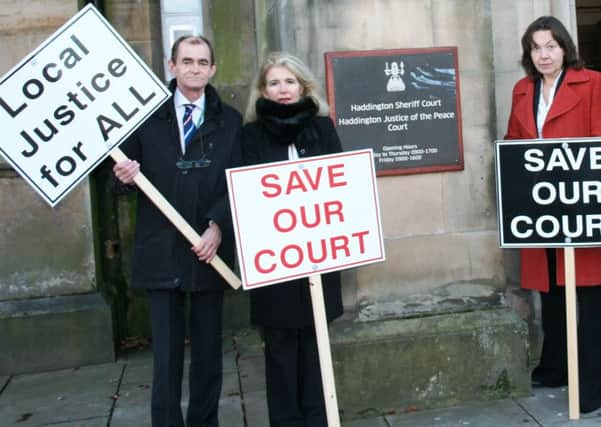No further court closures planned in Scotland


Plans to build a new Inverness Justice Centre, submitted for approval this week, are the latest step in a programme of court closures and refurbishments taking place across the country.
There are at present 43 courts operating in Scotland - 39 sheriff and justice of the peace courts, three dedicated high courts in Edinburgh, Glasgow and Aberdeen, and the Court of Session.
Advertisement
Hide AdAdvertisement
Hide AdSince 2010, 17 sheriff and JP courts have closed, 10 court buildings shut, and seven JP courts disestablished. There are no further closures planned.
The programme has attracted controversy, particularly in former royal burghs.
The market town of Cupar was a seat of justice for eight centuries until the closure of its sheriff court in 2014, with cases from north-east Fife now heard across the Tay in Dundee.
Haddington Sheriff Court, which operated for 500 years, closed the following year, with business moved to Edinburgh.
Ministers have insisted 95 per cent of court business was been unaffected by the changes, and that the Scottish Court Service had capacity within courts to deal with all current and anticipated cases.
The issue of court closures was revived last month when details, obtained by the Scottish Conservatives, revealed just 63.5 per cent of cases were being resolved within the set time frame.
The Scottish Courts and Tribunals Service (SCTS) said fewer cases were being dealt with within the 26-week period due to a greater focus on more complex cases involving domestic abuse and historical sexual offences.
Having completed the difficult task of reviewing of its estate, the SCTS is now looking to the future.
Advertisement
Hide AdAdvertisement
Hide Ad“Following public consultation, between April 2013 and March 2016 the courts service led a significant programme of court restructuring, based on the recommendations set out in the Shaping Scotland’s Court Services report,” said an SCTS spokesman.
“That programme has resulted in a more efficient court structure and a court estate that balances accessibility, specialism and affordability.
“Court business is being achieved within the performance targets set and the expected level of savings are being realised, enabling the SCTS to target investment more productively across the estate.
“Having consolidated Scotland’s court infrastructure we are now focused on delivering a system that continues to meet the needs of Scotland, making use of technology and investing to improve services.
“This year we proposed further reform arising from our review of criminal evidence and procedure.
“The recommendations in the review propose both a new approach to ensure children and vulnerable witnesses are protected from further trauma while giving evidence and radical digital transformation of the summary criminal justice system.
“We are also working with partners to upgrade and improve court facilities wherever possible – last week we announced a planning application for the development of a major new justice centre in Inverness – a facility that will provide world class services to court users and allow all partners across the justice system to work together more effectively, based in a purpose-built facility, designed with the delivery of services digitally in mind.”